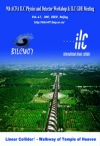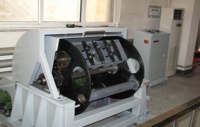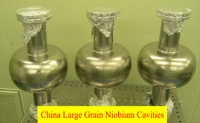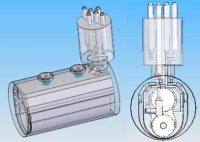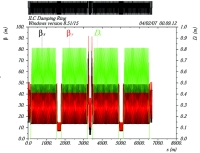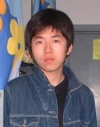 |
 |
|||||||||||||
|
|||||||||||||
|
|||||||||||||
|
The Temple of Heaven, a masterpiece of architecture and landscape design in Beijing symbolises the relationship between earth and heaven - the human society and the universe - which stands at the heart of Chinese cosmology. It was the central image on the poster for the 9th ACFA ILC Physics & Detector Workshop and ILC GDE Meeting in February 2007 at IHEP in Beijing, where the ILC reference design and preliminary cost were officially announced. Although the walkway towards the ILC is as long as that in the Temple of Heaven, China is now taking steady steps and making more contributions to the realisation of the ILC. This interest manifests itself in the Chinese scientists' unanimous support for China's participation in the ILC, which has been demonstrated during the Fragrant Mountain Meeting, held at the end of 2006, the expanding collaboration with KEK and other labs worldwide, the ILC GDE Meeting held in Beijing this February, and the various R&D efforts in progress at IHEP and other institutes. At the Fragrant Mountain Science Meeting held last winter in Beijing, participants discussed the role of China in the ILC collaboration. After three days of discussions, the participants from institutes, universities, and industry of mainland China and Taiwan concluded unanimously that China should play an important role in the ILC collaboration as an active partner. They stressed that it is very urgent for China to start as soon as possible in an ILC-related R&D collaboration. The ILC group at IHEP, led by Jie Gao, has made steady progress in ILC R&D both at home and through international collaboration since 2005. Their work includes SRF cavities, cryomodules, high power couplers, LLRF, damping rings, positron sources, beam diagnostics and beam dynamics in the ILC main linac and ATF2. Last year, Ning Xia large-grain cavity research for ILC started. The cavities will be welded this March in Beijing. A centrifugal barrel polishing (CBP) machine has been manufactured and set up in the RF Superconducting Laboratory. The vertical test will begin this summer at
In order to develop the SRF cryomodule technology in China, a joint group of IHEP and TIPC (Technical Institute of Physics and Chemistry, Chinese Academy of Sciences) was set up last October. They work on cryomodule structure design, fluid and temperature field simulation, mechanical and thermal stress simulation, tuner design, input coupler design, 3D engineering drawing and cost estimation. Their first goal is to make an integrated design of the China test cryomodule for the operation of a single 9-cell superconducting cavity. They will also join the international collaboration on ILC cryomodule design. Yi-Peng Sun, a PhD student working with Gao at IHEP, has carried out excellent work on the FODO lattice design and the single bunch collective effect for the ILC damping ring. He studied the lattice with the aim to reduce the total cost. This work includes the comparison of different kinds of arc cells, the simplification of the total lattice structure, decreasing the total number of magnets, design of the dispersion suppressor, optimising the dynamic aperture studies related to tuning. From these studies, Sun designed an alternative ILC damping ring lattice based on modified FODO arc cells. Its momentum compaction can be tuned between 2×10-4 and 6×10-4 only by adjusting the power supply of the quadrupoles. Based on Gao's bunch lengthening theory, a new bunch lengthening formula was established where the wiggler's effect is taken into account. The effectiveness of this formula was compared against CESR ring experimental results and applied to the ILC damping ring to estimate the bunch lengthening. About future work, Gao said: “China will extend its possible collaboration on ILC with other countries such as France in beam dynamics, the power coupler and the positron source studies.” -- J.Y. Zhai, IHEP |
|||||||||||||
| © International Linear Collider |
